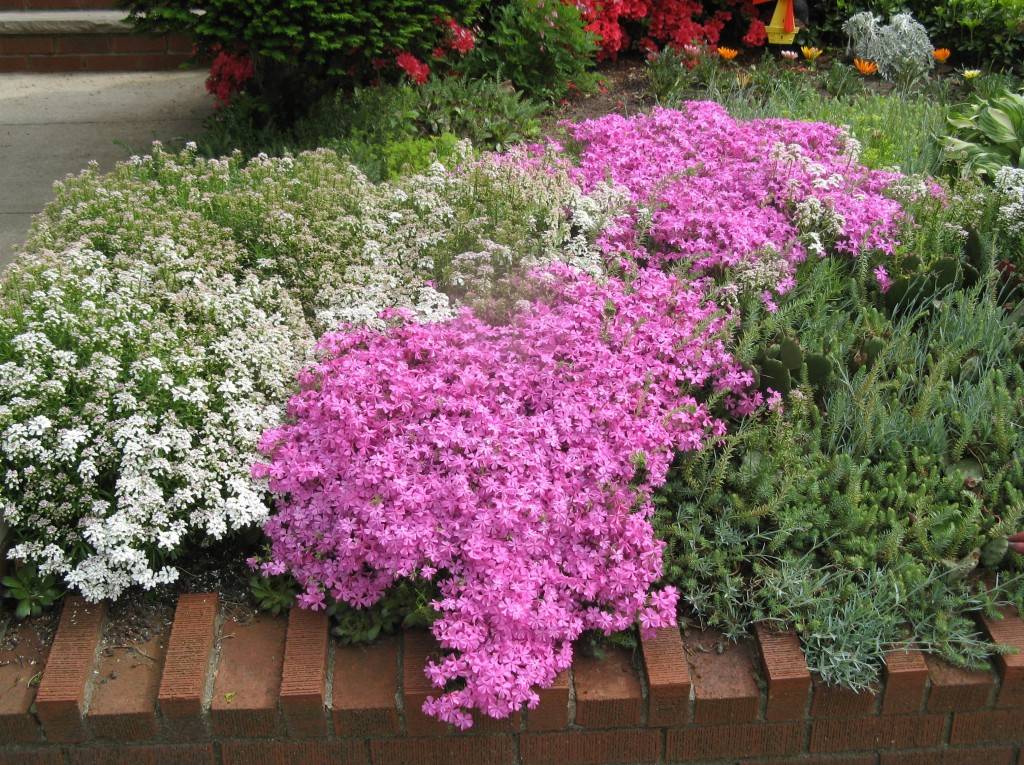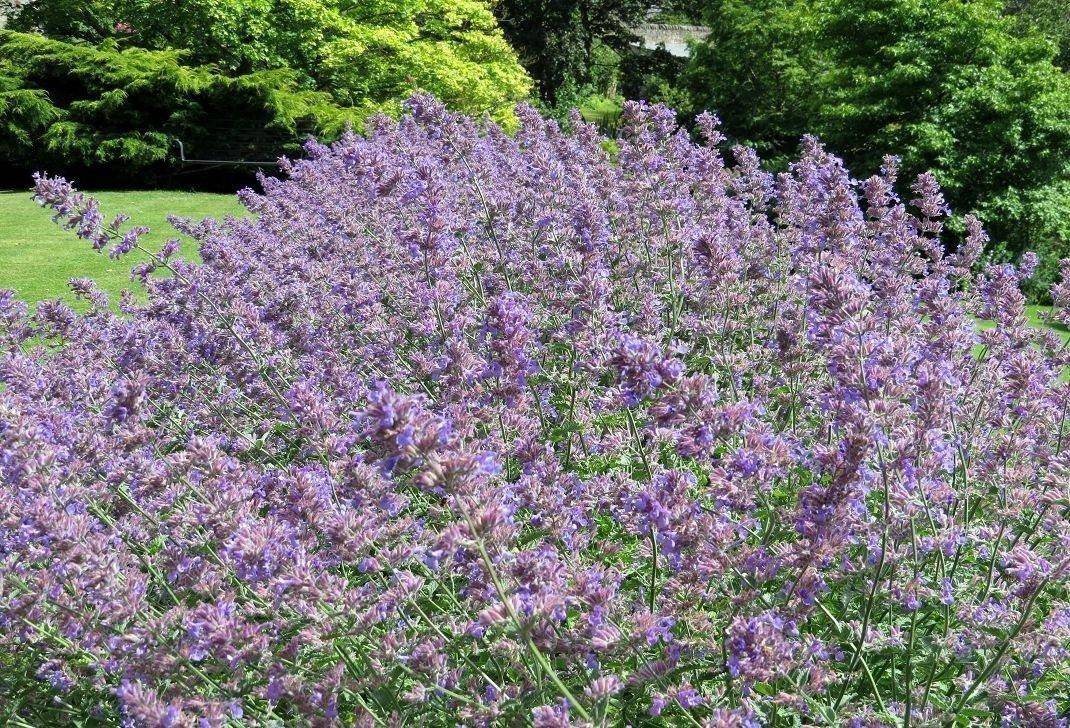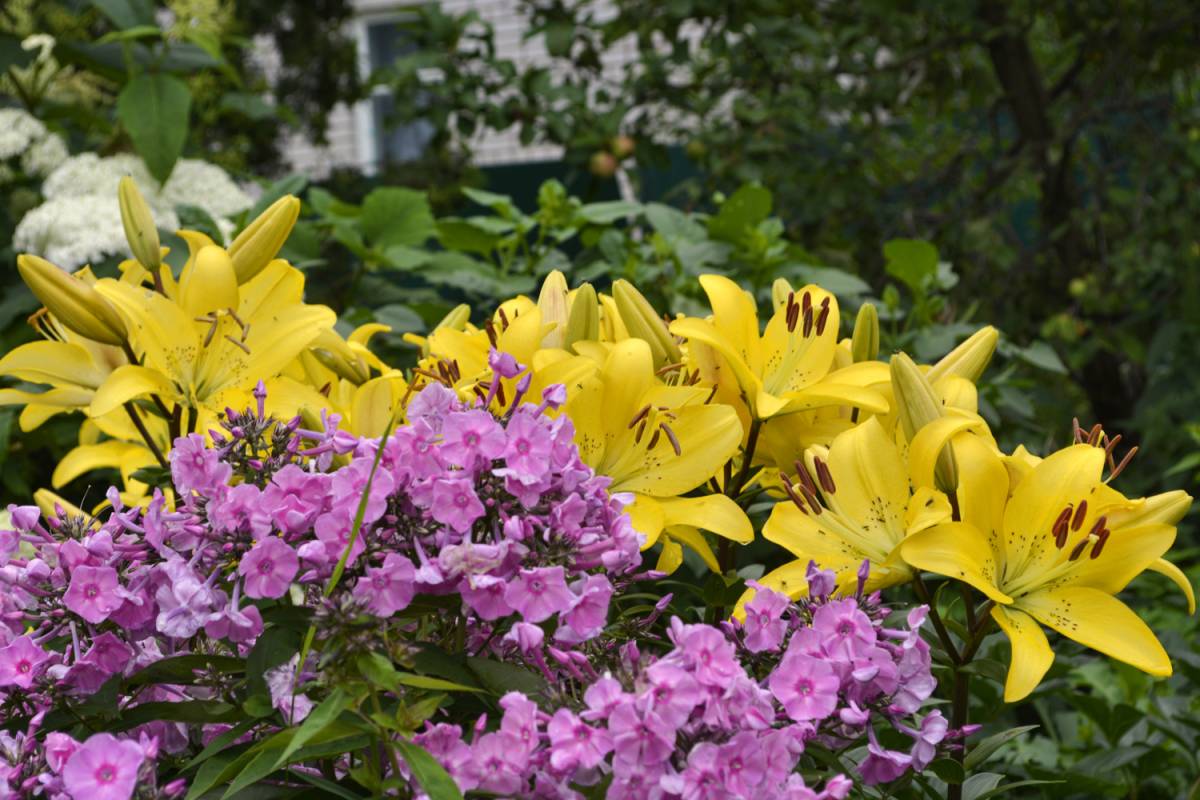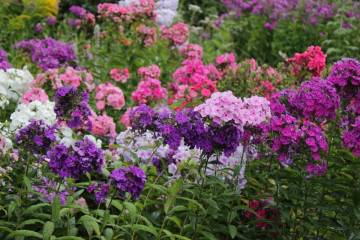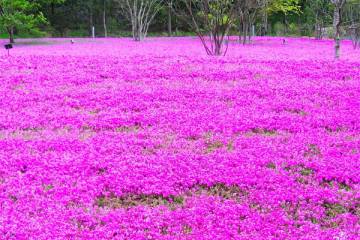Phlox on a flower bed in the garden
Content:
Phloxes in a flower bed are able to give a garden plot a range of bright, lush, fragrant buds. Phlox, which in Greek means "flame", is the most popular and unpretentious flower. Russian gardeners love it for its ease of care and elegant, festive look.
Application in landscape design
Phloxes in the garden can be combined with any other flowers. They can make the perfect composition with flowering and fruiting plants, as well as evergreen shrubs. Suitable for decorating alpine slides, framing decorative ponds. From this shrub, you can make a full-fledged hedge or divide the site into zones. Due to the fact that the roots of these flowers are not located deeply, they can be planted in flowerpots or pots, thereby decorating individual sections of buildings.
There are about a thousand varieties of phlox around the world. They are varied in shades, shrub height and growth and flowering characteristics. If you correctly combine varieties, you can create a unique composition that can delight with flowering throughout almost the entire season.
Place for a flower bed
When deciding on a place for planting plants for permanent residence, one should remember not only how phloxes will look on the site. It is also important to think about protecting the plants from direct sunlight and drafts and what to plant next to phlox.
The best place to plant would be a piece of land where the sun hits in the morning. At this time, its rays are not too hot, this will avoid burns on the leaves and fading of the color of the buds. In the afternoon, the light falling on the shrub should be diffused.
The most beautiful types of phlox
It is impossible to say with certainty - this view is the best. The tastes of each person are individual, and there are many varieties and varieties of these flowers. In order to create a flower garden that meets all the needs of a gardener, you need to understand the variations of phlox and how they differ.
These plants are classified as perennial and annual. Most of them are capable of growing up to 10-15 years. Only one variety is considered annuals - Drummond's phlox. Some breeders believe that this particular variety is the basis for all other plant varieties.
Phloxes are also subdivided into subulate, ground cover, Canadian and paniculate. They differ in the general structure of the trunk and leaves. Subulate ground cover phlox for the most part spread along the ground, rising in height no more than half a meter.
Canadian phlox are short shrubs. From a distance, it seems that they cover all of their territory. In fact, it is an ornamental shrub, from 25 to 45 cm high. In structure, it resembles a paniculate phlox, but in much reduced proportions.
Paniculate phlox grow vertically upward, if the trunk is bent to the side, then this shoot is considered defective and must be cut. In height, this type of phlox can reach 1.5 m. The leaves of this variety are large, elongated, dense, with a pointed end. They have a rich dark green color. The length can be up to 15 cm.
These flowers also differ in the structure of the flowers themselves, the shape and fullness of the inflorescences. The flowers are usually tubular and funnel-shaped. Consist of 5 petals, 1 - 3 pistils and 5 stamens. The shape of the inflorescences can be spherical or pyramidal. In one inflorescence, from 50 to 100 flowers are collected, up to 5 cm in diameter. They can be located either tightly to each other, or be at some distance.
Flower petals vary in shape. Edges can be pointed, smooth, rounded or terry. The petals are located at an angle of 90 ° to the tubular core of the flower. The calyx, assembled from petals, also takes various forms:
- wheel-shaped;
- saucer;
- notched;
- star-shaped;
- dissected.
Flowering time varies from variety to variety. Identify early flowering and late flowering. Early blooming flowers delight with flowering from May to mid-July, late ones can bloom from July to October. The average flowering time of one plant is up to 30 days. Some varieties are capable of blooming twice a season.
Another important factor in the difference between varieties is the variegation of some plant varieties. Phlox leaves in these varieties are colored with a border of a contrasting shade, thereby giving the flowers freshness and juiciness. The border can be lighter in relation to the sheet, or, on the contrary, much darker. Its thickness varies from a few millimeters to several centimeters. Moreover, on the inner side of the frame, there are periodic smudges directed towards the center of the sheet.
Spring and autumn are the most suitable seasons for planting phlox. It is better to plant flowers to create a flower bed according to the scheme. It can be drawn by hand or kept in mind.
Choice of colors
The color palette is rich and varied. However, in the composition of these plants, the yellow pigment is completely absent. Breeders all over the world have been trying for several centuries to develop a variety that has at least a faint shade of yellow. But all attempts end in failure. However, phloxes are capable of pleasing the eye in all shades of red, purple and white.
Phlox are combined with flowers that have light, light shades. In this case, they become lush and airy. Shades the sophistication and aristocracy of the neighborhood with flowers of pale yellow, bluish and cream motifs.
Effective combination with catnip
Although phlox are combined with many types of plants, they look most advantageous when catnip grows next to them. Small spikelets of catnip, of a light lilac color, favorably set off almost all types of phlox. This combination gives the flower bed fullness and harmony. In addition, the essential oil content of catnip helps repel some pests.
Annual chamomile helps to further enhance the effectiveness of the above-described composition. Nivyanik has a white color and short stature, so it will not overlap the beauty of phlox. But against the background of daisies, the bright colors of perennials will become more juicy and saturated.
Lilies and phloxes in one flowerbed
The structure of the lily visually resembles the shoots of phlox. The height of the plants is approximately the same. Together they look harmonious only if they pursue a certain design goal.It will not work to give a separate charm to paniculate phlox in a lily. Nevertheless, you can make a wonderful composition of the daylily and ground cover phlox. Dwarf splayed varieties will also be great when paired with a tall, stately lily.
How to achieve more effect
When the ideal flower garden is drawn up and the most suitable neighborhood is chosen, the color combination of perennial plants can become a little boring. In this case, you can diversify the shades of the main plant. Using the root separation method, it is possible to free up areas of soil in the flower bed and plant phlox of a lighter, or, on the contrary, dark shades.
A wonderful option is playing with light and the curly arrangement of phloxes on a flower bed. Gradient planting of various shades of flowers will allow you to admire the flower bed for a long time and constantly discover new motives.
Top dressing for beautiful flowering
The flower garden should not be allowed to dry out. In hot weather, watering is required daily, in cool weather - 1-3 times a week. Top dressing for a flower bed with phlox should be applied only to wet soil. This is how the fertilizer is absorbed best. The most suitable times for feeding are before and after flowering.
Mineral and organic substances of natural origin are suitable as fertilizers. You can also feed with combined fertilizers sold in specialized stores, they have different names, new types are provided every year. Therefore, the description should indicate that the fertilizers are suitable for phlox. The plant will benefit from ash mulching. It is recommended to cover the roots with nutritious soil for the winter.
To create a unique flower garden on a personal garden plot, it all depends on the scope and imagination of the gardener. A flowerbed with phlox, arranged in the local area, is unique in that it can be combined with any plants, and only benefit from it. In addition, phloxes are frost-resistant and rather unpretentious, so both experienced and novice gardeners will cope with them.
You need to know what phlox are combined with, and then they will create ideal compositions with roses, host, fern, gladioli, marigolds and other common flowers. The main thing in organizing a flower garden is to give freedom to desires and imaginations.

